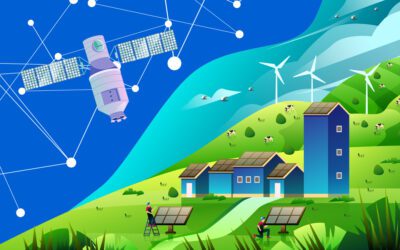A play on words and a symbol, the name of the project that Enel, the University of Cagliari, and the Polytechnic University of Turin have carried out: BIRDIE-S, an acronym for Build the Innovative Renewable and Digitally Inclusive Electrified – Sardinia.
Why a play on words? Because in Sardinian, “birdi” means green, as if both the signifier and the meaning of the word wanted to highlight that Sardinia is ideal for becoming a completely independent and sustainable territory, given its physical and socioeconomic specificities, and thus achieving the goal of zero emissions expected by 2050.
The island, in fact, having never been connected to the natural gas grid and having a significant predominance of electric consumption, could significantly advance the deadline set by the European agenda, by putting into practice what was analysed in the study, and outline a unique trajectory for the use of renewable sources.
The project
The BIRDIE-S Project was presented a few months ago at the University of Cagliari, with the participation of Enel’s Italy director, professors from the University of Cagliari, the Polytechnic University of Turin, and the Enel Foundation. Enel has recently published the complete work on its website, and i-EM wants to share this interesting document because it offers insights not only to understand the various technical aspects related to energy systems but also emphasizes the importance of human involvement within a more complex system, a crucial role linked to awareness, vision, and choosing the future model for communities.
This work is based on research, history, context, and analysis of future scenarios, indicating possible choices to be implemented, supported by numerical data and scientific evidence. The study analogously reflects i-EM’s working method; the company provides solutions primarily based on data analysis, observation, using their expertise in Machine Learning, Big Data, and satellite data to facilitate real-time awareness of network activities and support asset managers in the decision-making process, a critical aspect for the sector.
The strategic pillars of the project
BIRDIE-S considered resource availability, production costs and the state of the energy infrastructure, considering some key elements:
- Accelerating demand for energy in the service sector compared to the industrial sector.
- A growing environmental awareness influencing consumer decisions.
- A reduction in the use of internal combustion vehicles.
- A downward trend in electricity costs.

How did i-EM contribute to this project?
i-EM provided a report with the results and the methodology adopted to estimate the maximum photovoltaic capacity that can be installed in the geographic area of Sardinia, concluding with the areas that would effectively be occupied by photovoltaic and wind power plants.
i-EM study phases to identify the estimate of the maximum installable capacity
1. Classification of areas of the territory (urban, rural, forests, etc.).
2. Estimation of the maximum installable capacity (for each area) by identifying usability coefficients (the percentage of maximum area that can be used for the installation of a PV system).
3. Based on solar irradiance data from satellite images and considering the standard characteristics of PV modules and inverters, evaluation of producibility.
4. Conclusion with the analysis of the area to be used considering both photovoltaic and wind power plants.

Image related to average solar radiation.
After analysing the territory for vegetation, crops, waterways, and urban contexts, the team defined an area usability coefficient, which is essential for subsequent calculations and determining the percentage of maximum usable area for installing a photovoltaic plant. Based on all the assumptions considered and the acquired information, a simulation was conducted for each classified area and for each province of the Sardinian territory to determine the maximum installable capacity and the consequent producibility.

On the right: Schematic representation of the potentially occupiable land by photovoltaic installations and the land occupied based on BIRDIE-S estimates.
In short BIRDIE-S results
Sardinia can accelerate the energy transition path and achieve the set objectives even well before 2050, thanks to its infrastructural characteristics that differentiate it from other Italian regions. It already largely exploits the use of electric energy as the main source, with the addition of the availability of sun and wind for renewable energy production. Individual awareness, as well as organizational, decision-making, and policy structures, is crucial to materialize the project. The optimal mix offered by BIRDIE-S would lead to the island’s energy self-sufficiency and the resulting stability of energy prices, combining renewable sources and storage systems with land occupation not exceeding 0.3%.

All the images are taken from the BIRDIE-S project.






